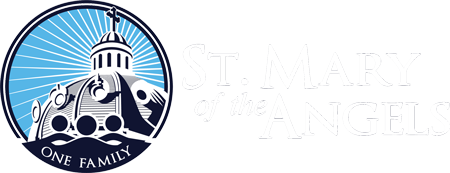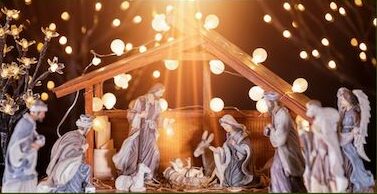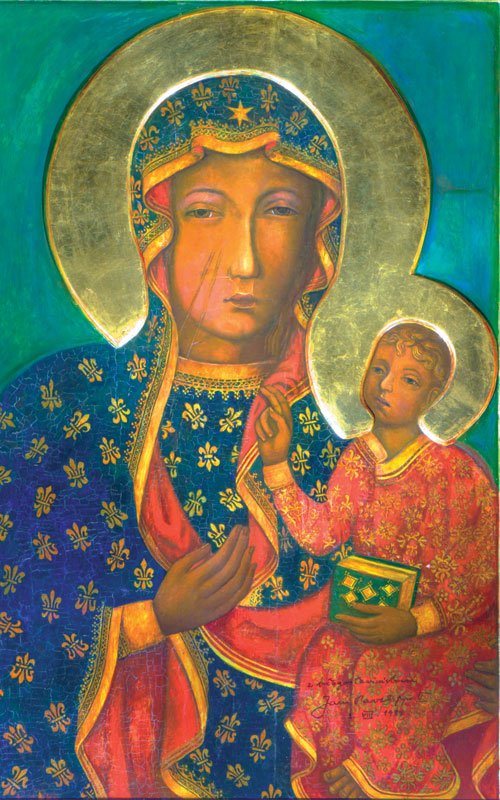In high school I learned about Our Lady of Fatima, her apparition and predictions for our world today. This led me to my vocation to Opus Dei and to the priesthood. I also learned about other apparitions, especially Our Lady of Lourdes.
I was ordained in the shrine of Our Lady of Torreciudad in Spain in the Marian year of 1987. Ten years later I returned to Torreciudad, making a pilgrimage to Lourdes on the way to World Youth Day in Paris. Subsequently I have been to Our Lady of Guadalupe a few times with high school service projects to Mexico.
In 2016, World Youth Day brought me to Poland where I was able to make a pilgrimage to the shrine of Our Lady of Czestochowa [chess-ta-HO-va]. Our Lady’s story there is very interesting and telling for St. Mary of the Angels.
St. Luke and Our Lady of Czestochowa
The story of Our Lady of Czestochowa begins with St. Luke who, had listened to Mary’s story of conceiving and giving birth to Christ. After Mary was assumed into heaven, he painted an icon of her holding the Christ-child. In addition to the icon of Our Lady of Czestochowa there are at least 10 other icons claiming to be painted by St. Luke, including Santa Maria del Populo in St. Mary Major’s in Rome. In his book, Mary of Nazareth, Michael Hesemann says the most likely candidate to this claim is the Advocata icon in Rome.
If St. Luke’s icon did exist, it was discovered by St. Helena, mother of Constantine, when she went to the Holy Land, found the true cross of Christ and other relics, and worked to preserve the sites related to our Lord’s life. The story goes that she took the icon with her to the city of Constantinople where a church was built to house it. There it remained, perhaps copied several times, until iconoclasm beset the Byzantine Empire(from 726 to 842), destroying many icons of angels, saints, and Christ—many were hidden.
One icon (a copy of the original, perhaps) made its way to a chapel in Belz, Belarus, in 802. King Louis of Hungary captured the town in 1377 and entrusted it to the Polish prince, Władysław Opolczyk. While the Tartars besieged the castle, Władysław prayed for help before the icon; an arrow entered the window and struck the neck of Our Lady. The sky immediately turned dark and the Tartar armies fled in fear. Władysław decided to bring the icon to safer town—his home town, Opole. As they troupe arrived in the town of Czestochowa, the horses pulling the carriage refused to go on. Władysław saw this as a sign and brought the icon to the little chapel atop the hill—Jasna Gora, Bright Mountain. He built a larger church and monastery there.
Soon people from all over Poland, Lithuania, Bohemia, Moravia flocked there to revere Our Lady. Czech Hussites—predecessors to the Protestants—attacked the shrine in 1430. They killed five religious and carried off sacred vessels, vestments, and the icon. The horses pulling the cart of loot stubbornly refused to go forward. One of he Hussites threw the icon on the ground and in broke into three pieces, but the face of Our Lady and the child Jesus remained unharmed. The Hussite stabbed Our Lady with his sword twice, then raised is sword a third time and was struck by lightning. The rest fled in terror.
While the icon was restored, all efforts to repair the scars from the arrow and sword failed, so the three scars remain as permanent elements of the icon—Our Lady insists that we remember her part in defending her children and how a sword shall pierce her heart… and face.



